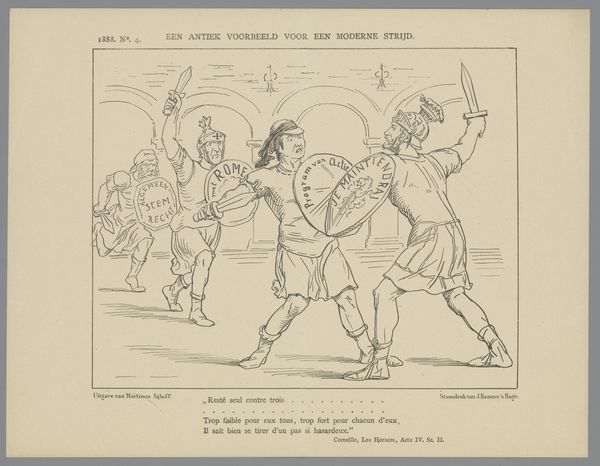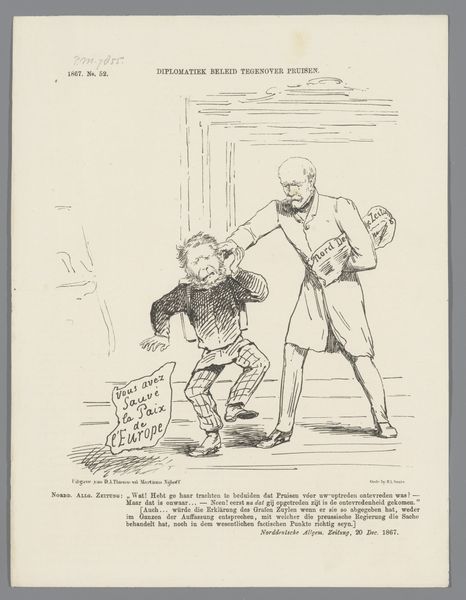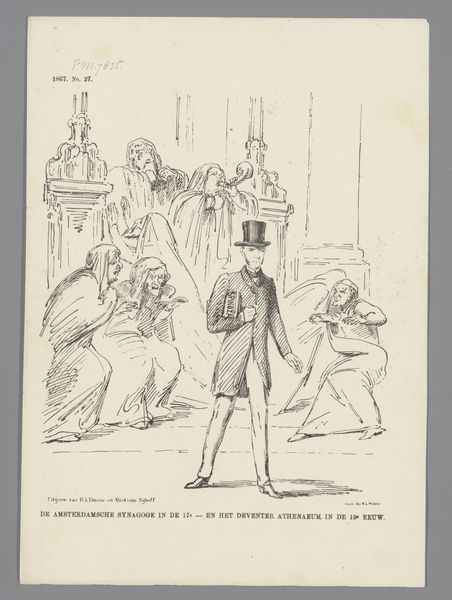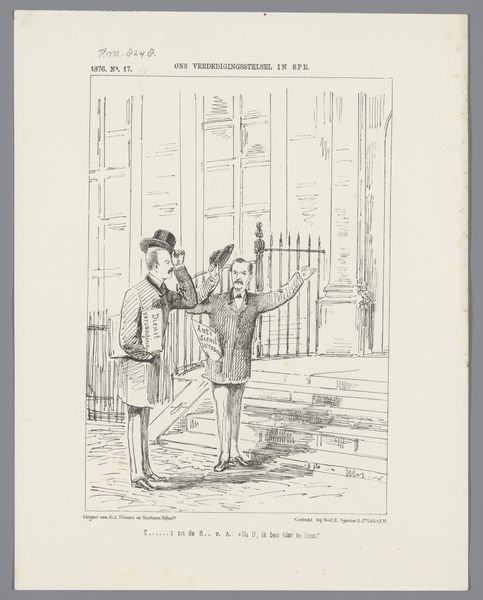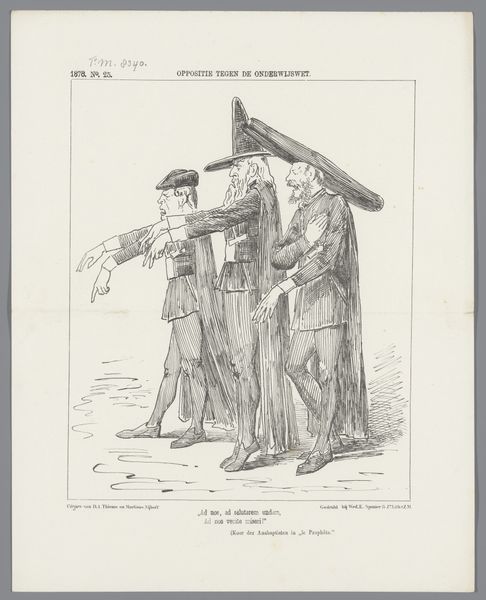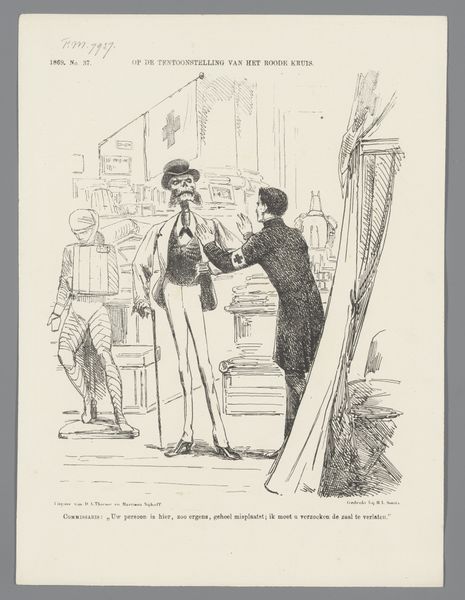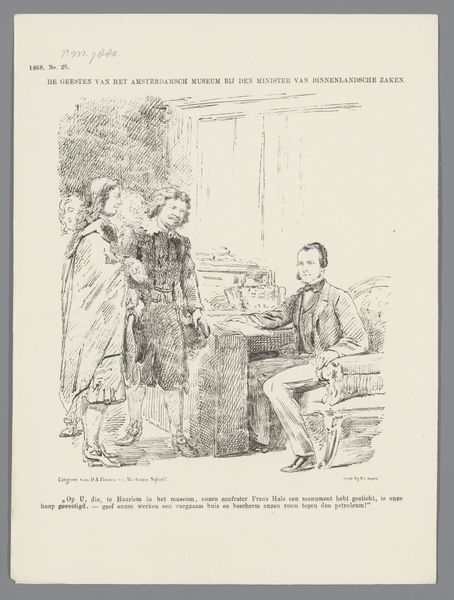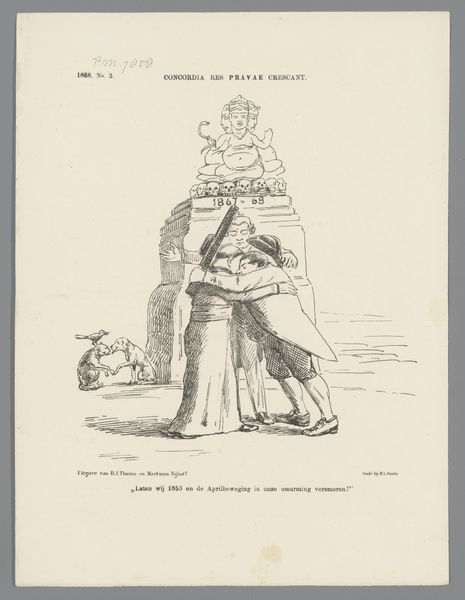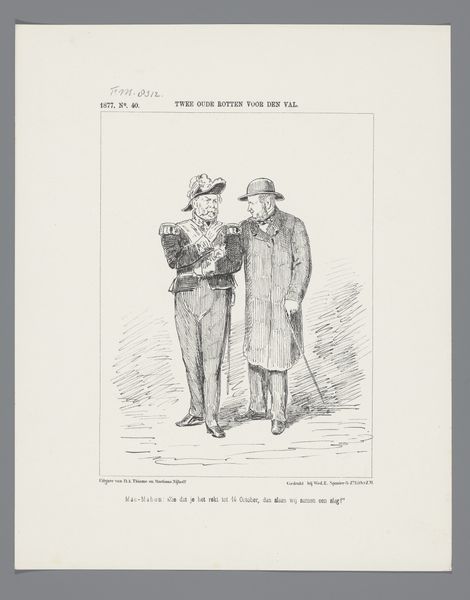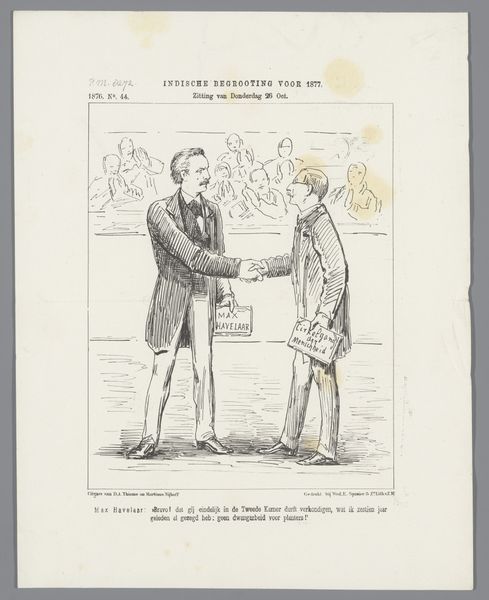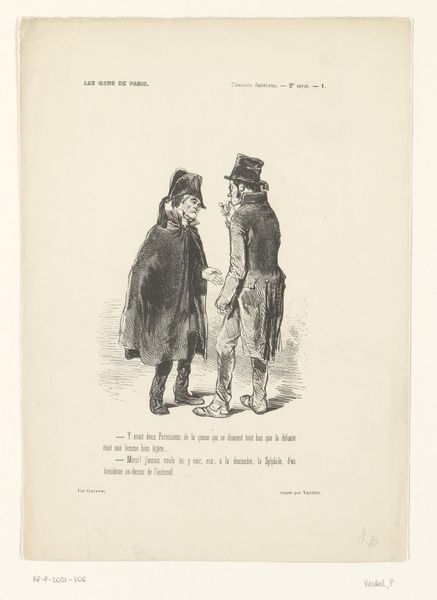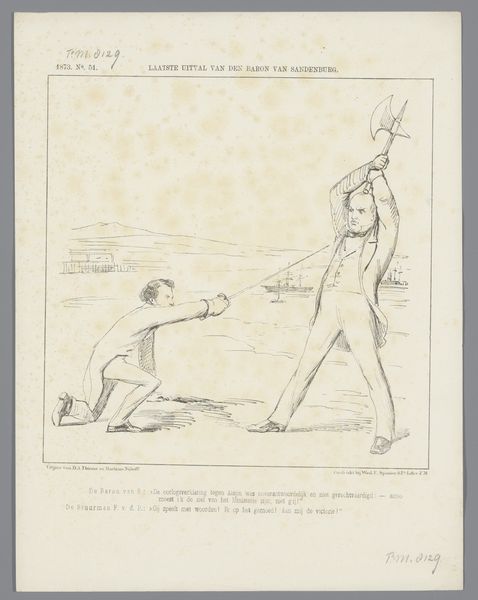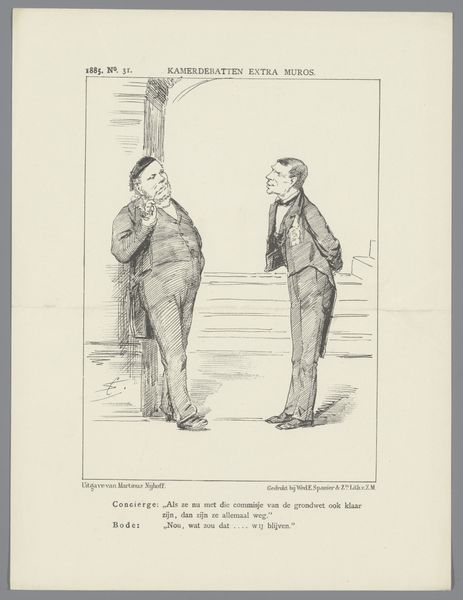
Spotprent over de voorgenomen stoomvaart verbinding tussen Nederland en Amerika, 1869 1869
0:00
0:00
Dimensions: height 275 mm, width 215 mm
Copyright: Rijks Museum: Open Domain
Curator: Ah, this intriguing sketch by Johan Michaël Schmidt Crans from 1869, titled "Spotprent over de voorgenomen stoomvaart verbinding tussen Nederland en Amerika" translates to a caricature about a proposed steamship line between the Netherlands and America. I’m immediately drawn to the precarious handshake occurring front and center. Editor: My eyes zero in on that handshake, too. The tangible, if symbolic, connection between these two figures feels fraught, doesn’t it? What are we to make of these stiff-legged bodies trying to hold steady? Is it meant to inspire or unsettle the viewer? Curator: Given its medium—a pen and ink print intended as a caricature—I would wager on unsettle. Look at the figure on the left, seemingly a Dutch sailor or everyman, in contrast to the gentleman on the right, possibly an American businessman, resplendent in his striped pants and tall hat. Note how the Dutchman's fingers curl hesitantly as he shakes, perhaps representing the anxiety about increased access to goods or competition that America's growth presented. Editor: The artist’s choice to create a print, a replicable and thus widely distributed form, screams accessibility and societal commentary. He’s inviting everyday viewers into the discussion. Consider also, how a steamship as a commodity transformed raw materials from the so-called New World and shipped them to sites of manufacturing and capitalist profit in Europe. Even in what seems to be a playful illustration, it reveals those uneven relations and exchanges. Curator: Indeed! It’s hard to miss the historical weight in such a piece, especially knowing this image predates transatlantic flights and easy access between continents. It renders me curious as to its influence, though subtle. Were average people persuaded to accept the changes? Or were these mere reflections of popular doubts already deeply entrenched? Also, look further left: could that statue be Michael de Ruyter, the famous Dutch admiral? Another reminder of maritime power? Editor: The looming statue brings up so many issues of nationalism. Even though mass manufacturing via ship travel seems like a technological development, it can also invoke notions of power, where Dutch superiority on the water made the Industrial Revolution even more productive at home. I suspect this image offered much food for thought in local newspapers or pamphlets at the time. Curator: That really ties the composition together! For me, understanding context allows the caricature to breathe. What initially appears satirical now unveils deeper questions regarding trade, influence, and national identities. Editor: Agreed. It shifts from being a humorous depiction to a meditation on the shifting terrain of global economics.
Comments
No comments
Be the first to comment and join the conversation on the ultimate creative platform.
